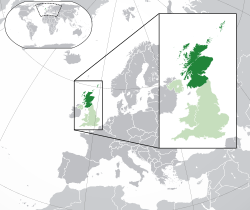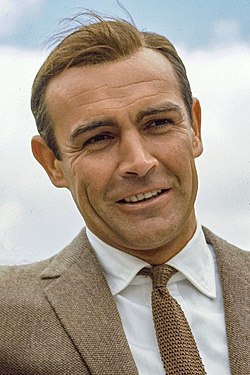
– in the United Kingdom (light green)
Scotland is a country which is part of the United Kingdom, having previously been an independent, sovereign country prior to the 1707 union with England. [1] [2] [3] Established in 843, this would make Scotland the second oldest country in Europe and the fifth oldest country in the world. [4] Its monarchy is amongst the oldest in the world, and is the oldest recorded monarchy in Europe. [5]
Contents
- General reference
- Geography of Scotland
- Location
- Environment of Scotland
- Regions of Scotland
- Government and politics of Scotland
- The Scottish government
- Legislative
- Local government in Scotland
- Legal system
- Military
- Census of Scotland
- History of Scotland
- By period
- By region
- By subject
- Culture of Scotland
- Art in Scotland
- People of Scotland
- Religion in Scotland
- Sports in Scotland
- Economy and infrastructure of Scotland
- Education in Scotland
- Specific schools
- Notes
- See also
- References
- External links
Occupying the northern third of the largest island, it shares a border with England to the south and is bounded by the North Sea to the east, the Atlantic Ocean to the north and west, and the North Channel and Irish Sea to the southwest. In addition to the mainland, Scotland consists of over 790 islands [6] including the Northern Isles and the Hebrides.
The countries head of government is the First Minister who is the head of the Scottish Government and Keeper of the Great Seal of Scotland. The First Minister chairs the Scottish cabinet and is accountable to the Scottish Parliament which is situated in the countries capital city, Edinburgh.























